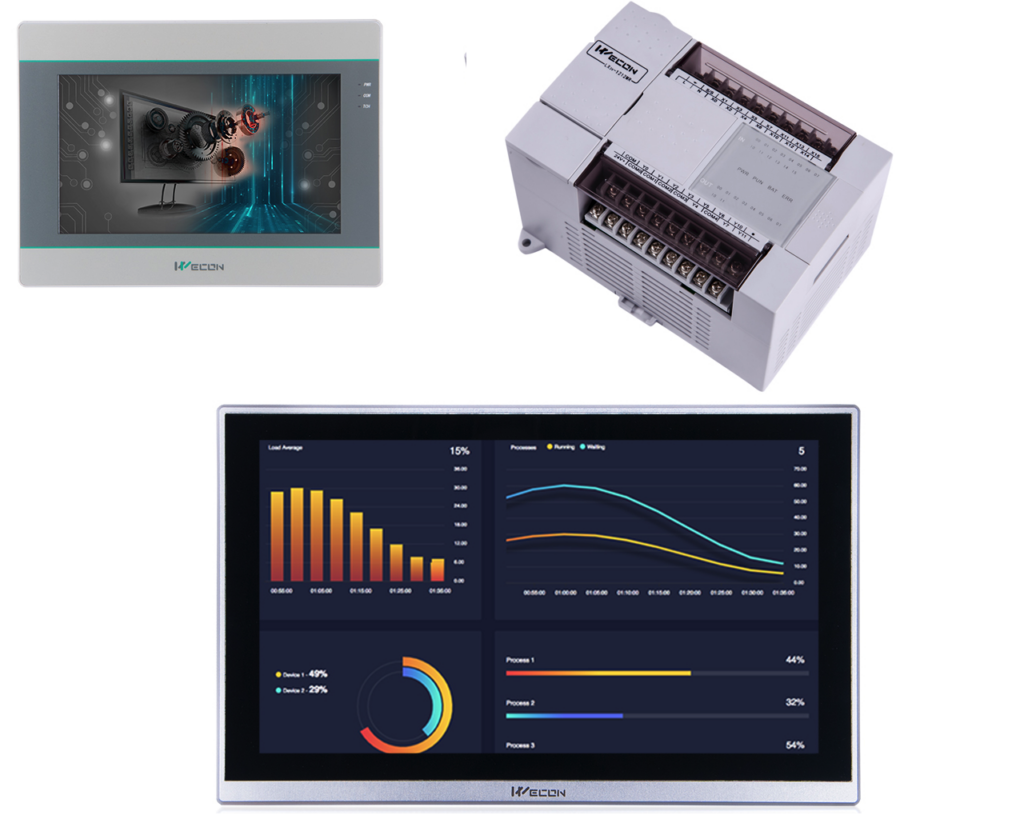WECON, as one of the top players in Chinese Automation world, is dedicated to providing cheap, reliable, and easy-to-use products for the automation industry around the world. However, WECON itself never takes a easy path in making their products. Here’s the simplified procedure WECON follows like a law behind the scenes to make sure its products flawless as always.
The first thing after getting parts including boards, displays etc delivered is to give it a thorough test. Any faults, even though only minor ones, will see the parts returned to its suppliers according to the contracts.

3. Getting protection
After the test, boards up to standard need to be painted on both sides to protect them from moisture, dust and statics. Then painted boards are put in to oven at 90℃ for 1-2 minutes. The result fluorescence on the boards after this step, can been seen when put under ultraviolet light.

This step sees displays, touch screens, boards, frames are put together.

Fluid dispenser locks all the electronic parts right on its spot, no movements could take them off.

The yellowish high temperature glue on the boards keep away any moisture and water drops from getting into FPC (Flexible Printed Circuits). Then software is loaded up before another round of thorough test.

5. Aging at room temperature



7. Random quality check
PLC goes through a similar procedure while being produced. Here are a few pictures taken of its production line.








